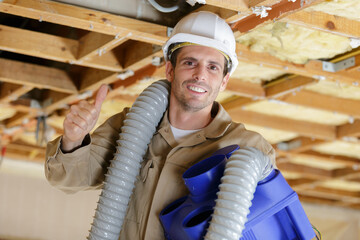Insulation helps keep homes warm and healthy, but over time it can get worn or damaged. It can also be contaminated by rodent droppings, urine, and nesting materials.
In some cases, you may need to remove old insulation. This could be due to rodent damage, water damage, or if you’re remodeling your home. To get the job done faster, call Ultimate Radiant Barrier experts today.

Cost
Insulation removal can be an expensive project. It is important to plan carefully and budget for this work before beginning the process. Several factors can affect the cost, including attic accessibility, labor, and disposal costs. Some regions may have higher labor or disposal costs, which can increase the overall cost.
Some older homes may require insulation removal to improve energy efficiency. Older insulation often loses its insulating properties over time, and replacing it with new, effective insulation can dramatically reduce monthly energy bills. It is also a good idea to remove old insulation if it has been damaged by water, rodents, or pests.
It is recommended to use a professional insulation contractor when performing this type of work. This will ensure the job is done correctly and safely. It will also save you time and money in the long run. A professional will have the proper equipment and knowledge to ensure the safety of the project and the health of your family.
While it is possible to do insulation removal yourself, this is a very time-consuming task and should only be undertaken by experienced professionals. The process of removing and disposing of insulation can take between five and eight hours, depending on the size of the attic space. The bagged insulation can then be taken to the local waste center for disposal.
If your home was built before the 1980s, there is a chance that it has asbestos insulation. While asbestos is no longer used in new construction, it can still be present in older insulation. If your home has asbestos insulation, a specialist will need to test and remove it.
The cost of insulation removal varies greatly and depends on the type of material and its condition. Foam insulation is usually the most expensive, while cellulose and fiberglass are cheaper. It is also recommended to get multiple quotes from various reputable insulation companies before hiring anyone.
In addition to reducing energy costs, replacing old insulation can help to prevent mold and mildew in your attic. These conditions can cause serious damage to your house and lead to expensive repairs. In addition, contaminated insulation can be a source of airborne pollutants that can be harmful to your family’s health.
Safety
Insulation removal is a messy job that requires proper safety measures to avoid injuries. For example, you should wear protective clothing that covers your skin and eyes. In addition, you should use a mask to prevent the inhalation of insulation particles and other potential irritants. Also, you should clear any items that are stored in the attic before you start removing the insulation. This will prevent them from becoming contaminated during the process and will provide you with a safe working space.
The first step in the insulation removal process is identifying the type of insulation in your home. Different types require different removal methods. For instance, fiberglass batts may release small particles during removal, which should be handled with a mask and protective clothing. Loose-fill insulation, on the other hand, needs a vacuum system for removal. In both cases, it is recommended to use a professional service to ensure your safety.
In addition to preventing health hazards, the removal of old insulation can help improve your energy efficiency. In addition, it can increase the value of your home when you plan to sell it. However, it is important to keep in mind that you must do regular maintenance to maintain the efficiency of your insulation.
When you are ready to remove your old insulation, start by creating a workspace in the attic. Clear out any boxes and furniture to create a clean work area. In addition, you should wear a mask and gloves to protect yourself from mold spores, animal dander, and dust particles. It is also a good idea to take a break every 15-20 minutes and to avoid stepping on any electrical wires.
Finally, be sure to dispose of your insulation correctly. Check with your local waste management company to see what the requirements are for recycling fiberglass and cellulose insulation.
If you do not have access to a recycling center, your local landfill may accept the material for disposal. Alternatively, you can donate your insulation to local nonprofits and organizations that need it. You can also ask a professional insulation company to dispose of your old insulation for you.
Time
When old insulation becomes damaged it can become a health and safety risk. Damaged insulation can also reduce your home’s energy efficiency. Replacing your insulation will improve air quality and lower your energy bills. Insulation can be damaged by pest infestation, mold growth, or water damage.
This insulation should be removed immediately. The insulation can contain rodent urine and feces, which could potentially contaminate your attic. It can also harbor bacteria, which can cause respiratory problems for the people living in your home. Old insulation can also be a nesting site for rodents, which can leave behind their pheromones. This may lead to a musty smell and a lack of airflow in the house.
A professional can remove contaminated insulation quickly and efficiently. They will use special equipment to suck the old insulation out of the attic and dispose of it in a dumpster. They will vacuum up the remaining insulation as well, making sure that the attic is clear of all debris. They will then install new insulation.
It is important to hire a professional for this project, as it can be dangerous. The professionals will wear protective gear and take steps to prevent contaminated dust from getting into the walls, floors, and ceilings of your home. They will also use plastic sheeting to protect the rest of the attic from contamination. They will also make sure to use a large vacuum that can hold a lot of debris.
The attic is a very confined space, which makes it difficult to work safely. It is best to start at the furthest corner of the attic and work your way toward the access point. This will save time and prevent you from having to crawl on your hands and knees. If you do decide to tackle the project yourself, be prepared for a long day of work. It will take about 5 to 8 hours to fully clean the attic and remove the insulation.
It is important to choose a company that can recycle the fiberglass insulation. If your local regulations permit it, you can use the recycled insulation to build new fiberglass products.
Equipment
When removing old insulation, it is important to have the right equipment. This includes a respirator, masks, and gloves, as well as the proper tools for the job. It is also a good idea to have a first aid kit available in case of any accidents. It is also important to take safety precautions, as some insulation materials can be hazardous, especially if they have become infested with mold or pests. If this is the case, it is best to enlist the services of a professional, who has the skills and equipment necessary to safely remove the insulation.
The first step in preparing for insulation removal is to clear out the attic space and remove any items that may interfere with the process. You should also turn off any power connections in the attic and seal all openings to prevent any leaking. It is also a good idea to check the attic for any signs of pests or rodents, which should be eradicated before starting the removal process.
It is important to have the proper equipment for insulation removal, as it can be a messy job. The most effective method is to use a blow-in machine, which uses a vacuum process to suck the insulation out of the attic. This is a faster and more effective way to remove insulation, and it can save you money in the long run.
If you are removing loose-fill insulation, you will need to purchase or rent a vacuum, bags, and hoses to get the job done. These pieces of equipment are designed specifically for loose-fill insulation and will help you achieve the best results. They are also easy to use, and you can expect the insulation removal process to go smoothly.
When removing spray foam insulation, it is a good idea to wear gloves, face masks, and a protective suit to avoid breathing in any dust particles. It is also a good idea to wear a pair of safety glasses or goggles to protect your eyes from any debris. It is also a good idea to use a ladder or scaffolding when accessing the attic, and make sure that it is secure.

